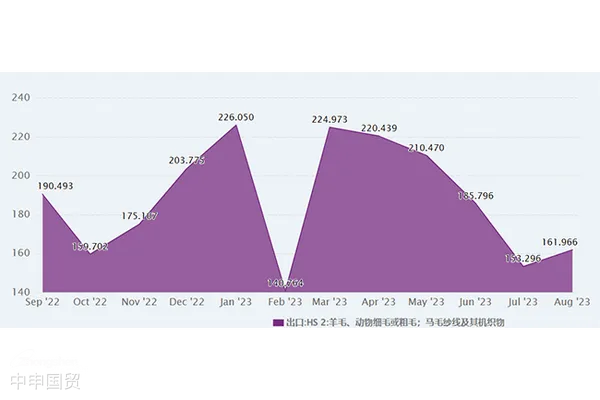- Shanghai Zhongshen International Trade Co., Ltd. - Two decades of trade agency expertise.
- Service Hotline: 139 1787 2118
China, as a key global market for yarn production and trade, has recently exhibited new developments. According to China Customs statistics, from January to July 2023, Chinas yarnimport and exporttotal value saw a year-on-year decline of 13.4%, presenting varying degrees of challenges and opportunities for both export and import markets.

I. Export Market: Facing Decline but Revealing New Opportunities
(1) Overall export trends show a decline, with notable price drops
In the first seven months of this year, Chinas yarn exports amounted to $8.26 billion, a year-on-year decrease of 12.9%. Meanwhile, the average export price of yarn also saw a significant drop of 20.1%, undoubtedly squeezing the profits of many enterprises.
(2) Regional disparities emerge, with growth in Central Asia and the Middle East
Notably, Chinas yarn exports to Central Asia and the Middle East showed growth. For example, exports to Middle Eastern countries and Central Asia increased by 7.9% and 7.3% year-on-year, respectively. However, exports to ASEAN, the Americas, and European markets experienced varying degrees of decline.
(3) Subsequent Market Outlook
In the fourth quarter, if overseas demand for apparel recovers, the decline in yarn exports is expected to gradually narrow. New market opportunities and customer demand may also bring fresh vitality to the export market.
II. Import Market: Low Inventory Levels, Potential Growth Ahead
(1) Decline in Import Value but Increase in Both Volume and Price
Although the import value of Chinas yarn decreased by 14.7% year-on-year in the first seven months of 2023, import volume showed a 2.1% increase.
(2) Different Performance Between Cotton Yarn and Chemical Fiber Yarn
At the product level, cotton yarn imports increased by 5.7% year-on-year, while chemical fiber yarn imports decreased by 11.4% year-on-year. Vietnam has remained a major source of Chinas cotton yarn imports. Despite declines in both import volume and value, it still holds a significant position in the Asian region.
(3) Future Forecast
With the cotton price gap between domestic and international markets turning from negative to positive, coupled with the recovery of production capacity and stronger sales willingness in major cotton yarn exporting countries like India and Vietnam, Chinas yarn imports are expected to grow in the next couple of months.
III. Industry Adjustment and Future Outlook
While facing various challenges, Chinas yarn market is also seeking new opportunities. Industry experts and relevant officials suggest that Chinese yarn enterprises should pay closer attention to product quality and market dynamics amid profit squeezes and market adjustments, while optimizing management and improving efficiency to better adapt to market changes.
Chinas yarn import and export market has recently exhibited new characteristics and trends. While confronting a series of challenges, how to grasp market changes, seek new opportunities, and maintain competitiveness in the global market will be key issues for Chinas yarn market to focus on and ponder in the future.
Related Recommendations
? 2025. All Rights Reserved. 滬ICP備2023007705號-2  PSB Record: Shanghai No.31011502009912
PSB Record: Shanghai No.31011502009912









